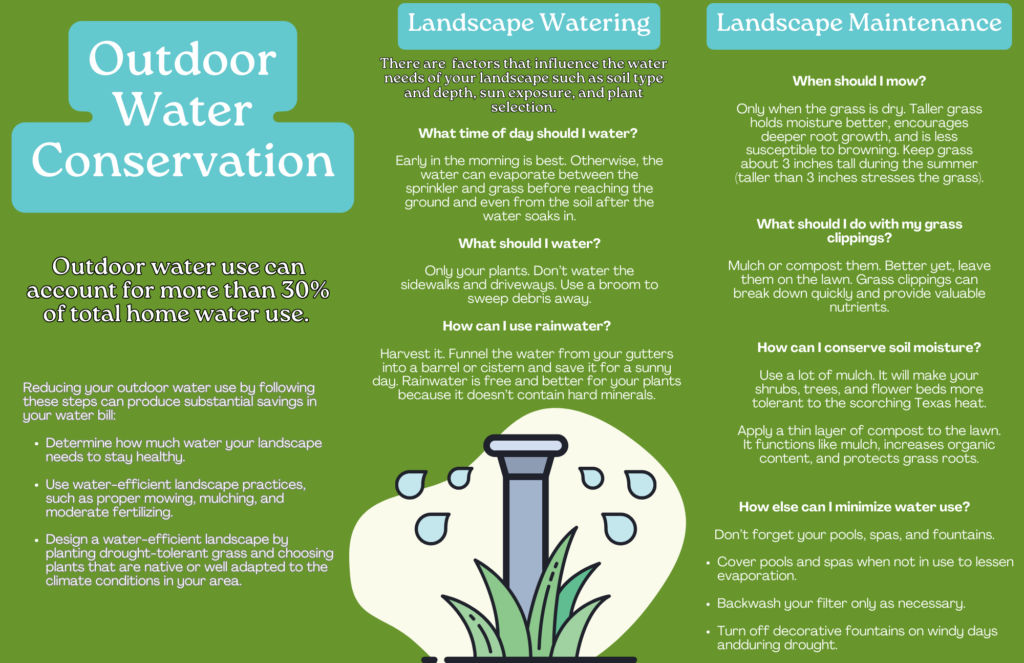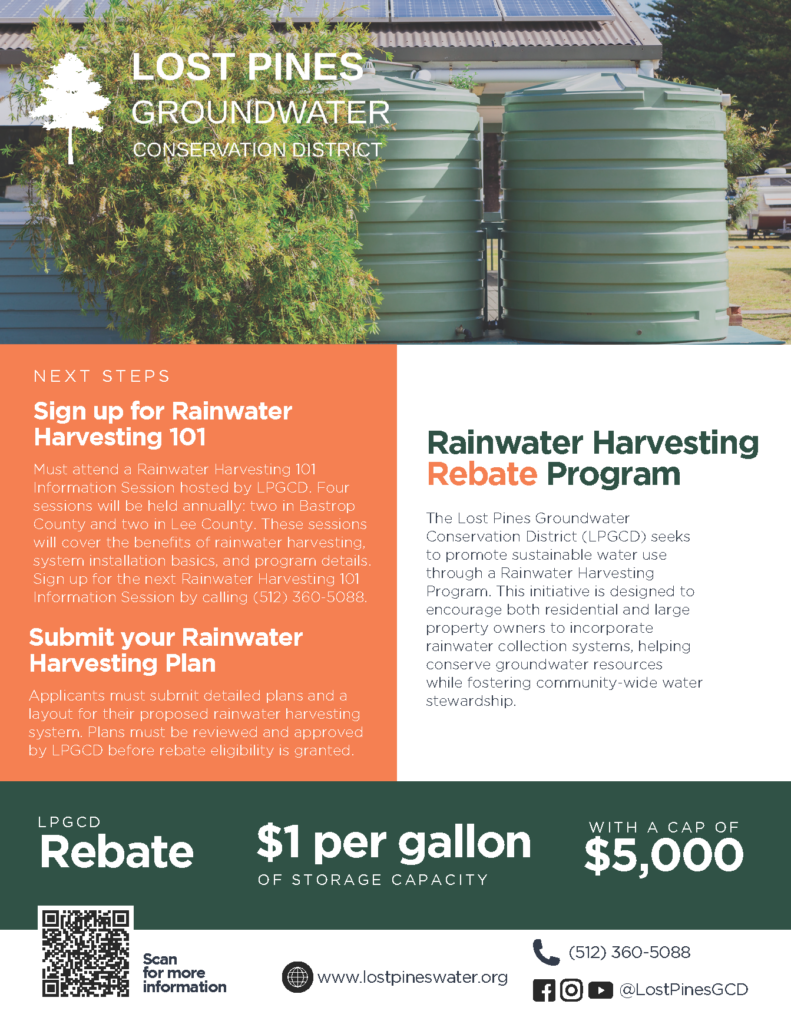
Tips and Tools
Why Rainwater Harvesting?
Rainwater Harvesting is a sustainable way to:
- Conserve groundwater by reducing dependence on utility sources.
- Lower water bills by using free rainwater for irrigation and other non-potable uses.
- Protect the environment by minimizing runoff and erosion.
- Provide a reliable water source during droughts and water restrictions.
The Lost Pines Groundwater Conservation District offers workshops and a generous rebate to encourage rainwater harvesting:
- $1 per gallon of storage capacity
- Up to $5,000 per system
To qualify, you must:
- Reside in Bastrop or Lee County within LPGCD’s boundaries
- Attend a Rainwater Harvesting 101 Information Session
When it comes to water conservation, every drop counts—especially here in Texas, where long, dry summers can put a serious strain on water supplies. One of the easiest and most impactful ways you can help? Plant native!
Why Go Native?
Texas native plants are perfectly adapted to our state’s unique climate, soil, and weather patterns. That means they’re built to thrive in the heat, survive dry spells, and require less watering and maintenance than non-native species. By landscaping with Texas natives, you’re not only saving water—you’re also supporting local ecosystems and cutting down on the need for fertilizers and pesticides.
Water-Wise Benefits:
-
Low Water Needs: Once established, most native plants need far less irrigation.
-
Drought-Tolerant: These plants are survivors—they can handle the heat and keep your yard looking great even when rain is scarce.
-
Reduces Runoff: Deep root systems help water soak into the ground instead of running off, keeping your soil healthy and reducing erosion.
-
Saves Time & Money: Less watering and maintenance mean lower bills and fewer hours spent on yard work.
Native Texas Plants to Consider:
Here are a few tried-and-true Texas natives to get you started:
-
Texas Lantana – Bright, colorful blooms that attract butterflies.
-
Blackfoot Daisy – Low-growing, hardy, and drought-tolerant.
-
Mexican Feathergrass – Adds soft texture and movement to your landscape.
-
Cenizo (Texas Sage) – A shrub with beautiful purple blooms and a natural drought defense.
-
Turk’s Cap – Shade-tolerant and hummingbird-friendly!
- For more Texas native plant ideas, visit Native Plant Society of Texas.
Landscape Ideas to Consider:
-
Xeriscaping. This low water landscaping strategy not only helps conserve resources and reduce water bills but also enhances your outdoor space with beauty and functionality.
-
Design with Layers. Layering plants by height and water needs can create a cohesive and visually appealing landscape.
-
Mulch matters. Add mulch to help soil retain moisture and keep roots cool.
-
Incorporate Rainwater Harvesting. Capture and reuse rainwater with barrels or cisterns. This provides a sustainable water source for your garden while reducing runoff and erosion.
Conservation Starts at Home:
Planting native isn’t just about having a pretty yard (though you’ll definitely get that too). It’s a smart, sustainable step toward protecting our water resources and building a landscape that can weather the Texas climate year after year.
Ready to dig in? Let’s conserve together—one plant at a time!



